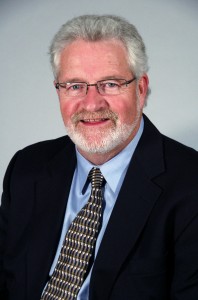
Mike McCallion, who holds the Rev. William Cunningham Chair in Catholic Social Analysis at Sacred Heart Major Seminary, asks: "
Is There Really a Priest Shortage in the Archdiocese of Detroit? (AOD)" (The Catholic Conversation, University of Notre Dame, February 17, 2014):
I think there is a common misconception in the Archdiocese of Detroit that there is a priest shortage! When I compare the number of priests to the number of parishes in the Archdiocese, it seems clear to me that there is not a priest shortage. If I am right, sociologists would call “the priest shortage” a mythic fact, myth in the sense of statistically not true. Let me explain.....
... First of all, with 588 priests, the AOD could assign 2 priests to every parish with some to spare. So, who are these 329 non-parish priests? Well, 131 of these priests are retired, which leaves 198 others in ministries that supposedly make these priests unavailable for parish work. This total includes bishops, those engaged in provincial work, campus ministers, chaplains, faculty/teachers, those in central service, etc. Now, if we examine more closely the 198 priests who are not retired, 143 are religious and 55 are diocesan. Of the 143 religious priests there are 64 who are 70 years of age or younger (average age = 56), and 49 of the 55 diocesan priests are 70 years of age or younger (average age = 55); leaving a total of 113 priests who could possibly be pastors.
So, there are 457 active priests (259 in parishes and 198 in other roles), raising the question that if there are only 237 parishes, then what are the other 198 or, more realistically, the other 113 (non-parish) priests doing that precludes them from being a pastor? Granted, I am not privy to whether these 113 priests are equipped for parish ministry, but it seems to me that probably most of them are. Obviously, they are doing something other than being pastors/associate pastors. All things being equal, therefore, I argue the AOD faces a priest distribution problem rather than a priest shortage problem.
I also conclude, all things being equal, that it appears that parishes are not a top priority, if my figures are correct. Why? Because otherwise the AOD would not be closing/clustering/merging parishes based on the unavailability of priests (which has not always been the only reason but often the predominant one).
... The raising of consciousness [about this] is particularly important because as Mike Vlasic (Chair of the restructuring committee for the AOD in 2009) stated at the AOD Central Services day in September 2009, and to which everyone appeared to agree, the health of AOD parishes determines the health of the AOD. If that is true, then it seems to me that parishes should be the top priority in terms of priest assignments and not something else.
Finally, now that the AOD has only 237 parishes today compared to 313 in 2000, with more closings anticipated; it appears that the numbers of priests are aplenty. Then again, I could be missing something in this analysis. If so, please enlighten me. Otherwise, I agree with the USCCB, we should stop using the term “priest shortage” in that it seems to be more of a priest distribution problem than a numbers problem.
It seems, then, that in addition to stressing the top priority of
parish needs, Dr. McCallion is asking a two-fold question: Does it make sense to talk about a "shortage" of priests (1) if the problem is actually one of "distribution" rather than "shortage," and (2) if the current rate of parish closings is keeping pace with the pool of available active priests? Interesting question.
 Mike McCallion, who holds the Rev. William Cunningham Chair in Catholic Social Analysis at Sacred Heart Major Seminary, asks: "Is There Really a Priest Shortage in the Archdiocese of Detroit? (AOD)" (The Catholic Conversation, University of Notre Dame, February 17, 2014):
Mike McCallion, who holds the Rev. William Cunningham Chair in Catholic Social Analysis at Sacred Heart Major Seminary, asks: "Is There Really a Priest Shortage in the Archdiocese of Detroit? (AOD)" (The Catholic Conversation, University of Notre Dame, February 17, 2014): 
No comments:
Post a Comment